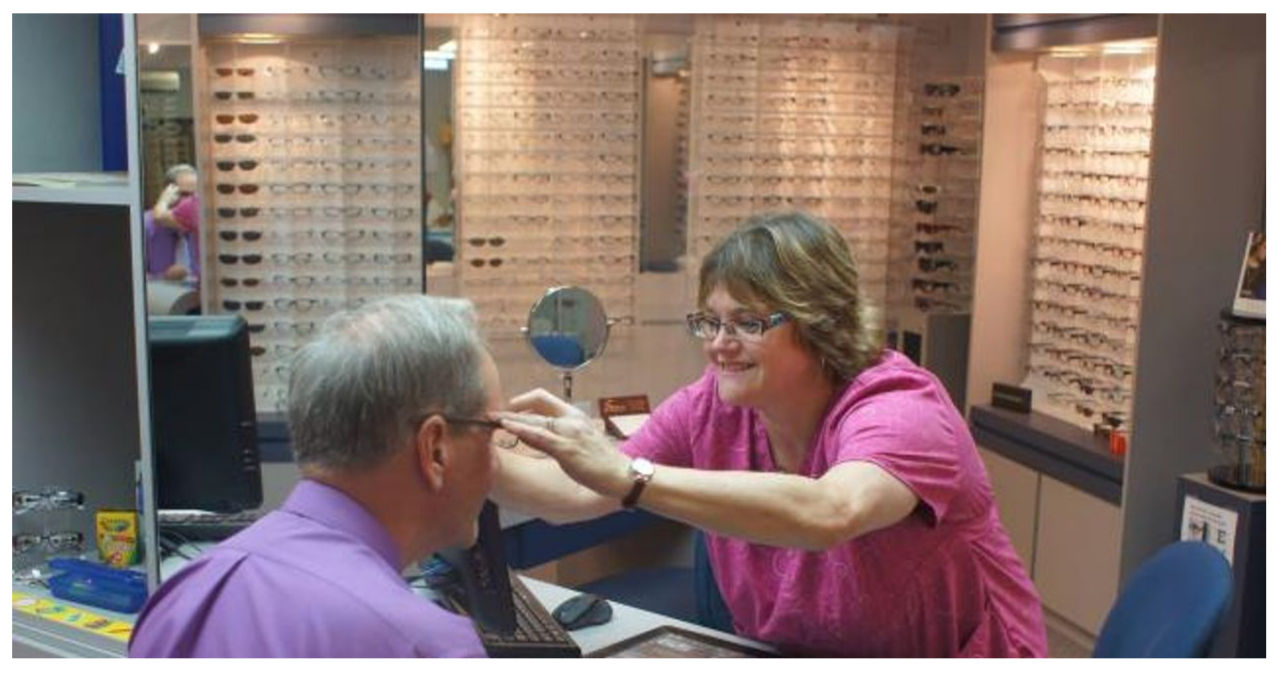There is currently a heated debate in Vermont between optometrists and ophthalmologists regarding the authority to perform eye surgeries.
A bill currently under consideration by the Vermont Legislature is proposing to grant optometrists the authority to perform specific surgeries that are currently only performed by ophthalmologists. Ophthalmologists, who are medical doctors and surgeons, specialize in providing comprehensive eye care, whereas optometrists primarily focus on primary eye care.
According to Dean Barcelow, the president of the Vermont Optometric Association, optometrists undergo a comprehensive training program. This program consists of four years of undergraduate training, followed by four years of graduate training specifically focused on the eye. As a result, optometrists earn a Doctor of Optometry degree.
According to Dr. Jessica McNally, the president of the Vermont Ophthalmological Society, ophthalmologists are both physicians and surgeons. They undergo extensive education and training, starting with a four-year undergraduate degree program, followed by four years of medical school. After completing medical school, ophthalmologists then dedicate four to six years to residency and fellowship training. During this time, they may receive specialized training in areas such as general surgery, emergency medicine, and internal medicine. However, their primary focus remains on advanced medical and surgical treatment for eye conditions.
In the past, optometrists used to refer patients to ophthalmologists for surgeries, injections, and laser procedures. However, legislation like the one currently being considered in Vermont is blurring this distinction. South Dakota recently joined other states in expanding the scope of work for optometrists, allowing them to perform surgeries that were previously exclusive to ophthalmologists. Optometrists argue that this expansion builds upon the in-office procedures they already perform, improving patient access and reducing costs. On the other hand, ophthalmologists counter that it poses risks due to the lack of training and experience optometrists have in these procedures.
Procedures and Surgeries Optometrists Aspire to Perform in the Future
Optometrists, as primary eye care providers, have a strong desire to expand their scope of practice and offer a wider range of procedures and surgeries to their patients. While they already play a crucial role in diagnosing and managing various eye conditions, there are certain procedures they are currently unable to perform. Optometrists wish to gain the necessary training and legal authorization to perform these procedures, allowing them to provide comprehensive care to their patients.
One procedure that optometrists would like to perform is minor surgical interventions, such as removing foreign bodies from the eye or eyelid. Currently, patients with these issues often end up in emergency rooms or are referred to ophthalmologists for treatment. Optometrists feel that being able to perform these minor surgeries would not only save time and resources but also ensure that patients receive prompt and efficient care.
Another procedure optometrists are eager to offer is the removal of non-cancerous skin lesions around the eye area. These lesions, such as chalazia or benign eyelid growths, can cause discomfort and affect a person’s appearance. Optometrists believe that being able to perform these procedures would greatly benefit their patients by providing them with a convenient and accessible option for treatment.
Optometrists are also interested in being able to perform certain laser procedures, such as laser trabeculoplasty for glaucoma management. Currently, optometrists can diagnose and manage glaucoma using medications and other non-invasive methods, but they are unable to perform laser procedures. Having the ability to perform these procedures would further enhance their ability to provide efficient and comprehensive care for patients with glaucoma.
Moreover, optometrists aspire to have the authority to prescribe oral medications for certain eye conditions. While they can currently prescribe topical medications, being able to prescribe oral medications would provide them with additional treatment options for their patients. This would allow optometrists to manage a wider range of eye conditions without the need for referrals or collaboration with other healthcare providers.
In conclusion, optometrists have a strong desire to expand their scope of practice and offer a broader range of procedures and surgeries. These include minor surgical interventions, removal of non-cancerous skin lesions, laser procedures for glaucoma management, and the ability to prescribe oral medications. By gaining the necessary training and legal authorization, optometrists aim to provide comprehensive care to their patients, ensuring timely and efficient treatment options.
Vermont optometrists are keen on expanding their range of surgical procedures, which can be categorized into three main areas, as explained by Barcelow. The first area involves injections into the superficial eye, specifically the eyelid, rather than directly into the eye itself. Additionally, optometrists are seeking permission to administer dye injections into a patient’s veins for the purpose of detecting any potential leakage in the blood vessels of the eye.
In addition to the first bucket, there is the second bucket which involves removing small, harmless lesions like skin tags located on or near the eyelid. According to Barcelow, the third bucket consists of three laser procedures that are clearly defined. The first procedure is specifically associated with cataract surgery.
According to the expert, during cataract surgery, a new lens is inserted into the eye to replace the cloudy one. He explains that sometimes, a film can develop on the back of the lens after six months to ten years, which can be treated by using a laser to remove it. The laser procedure typically takes two to three minutes, but it may take longer if the film is thick or if the patient is anxious.
In the second procedure, a laser is utilized to create an “emergency drain” in the eye when the natural drain becomes obstructed and fluid accumulation occurs. Additionally, the third laser procedure aims to enhance drainage by stimulating the eye’s tissue responsible for draining to function more effectively. This technique is especially beneficial for individuals in the early stages of glaucoma or those who are unable to use eye drops, as noted by Barcelow.
Barcelow emphasized that the procedures involving sharp objects near the eye are not a significant departure from existing practices. He acknowledged that such tools are already utilized in the field and are familiar to professionals.
Barcelow criticized ophthalmologists for using scare tactics to intentionally make people anxious.
Ophthalmologists emphasize that the surgeries that optometrists wish to perform are not as straightforward as they may claim.
McNally discussed Barcelow’s first bucket, which involved administering injections into the superficial eye and injecting dye into patients’ veins to examine for any leaky blood vessels in the eye.
Injecting dye to check for leaky blood vessels, known as a “fluorescein angiogram,” frequently induces feelings of nausea and occasionally leads to vomiting. In some cases, this procedure can even trigger anaphylaxis, a severe allergic reaction that can be life-threatening, according to McNally.
McNally expressed his disapproval of performing fluorescein angiography in his office. He stated that optometrists often use a camera-based testing equipment that yields comparable or even identical results. He questioned the need for angiograms, as their purpose seemed unnecessary.
According to McNally, the question of whether a lesion in the eye is benign is filled with uncertainty when it comes to removing small lesions.
According to McNally, optometrists are trained to determine if a lesion is benign or malignant and decide whether it should be removed. However, specialists who specifically treat eyelid lesions have encountered cases where lesions they thought were benign turned out to be malignant. This highlights the concern of misdiagnosis. McNally further expressed worries about the way Barcelow presents these lesion removals, emphasizing the need for caution and thorough evaluation.
McNally argues that optometrists downplay the importance of removing a lesion near the eye.
According to McNally, the process of removing lesions and cysts involves the use of a scalpel, followed by sutures to close the wound. There is also the possibility of unexpected bleeding. McNally has had conversations with the Office of Professional Regulation and lawmakers, highlighting the challenge of predicting the need for sutures and the importance of being prepared for such situations.
Finally, let’s talk about lasers. McNally expresses deep concern about optometrists performing procedures involving lasers in Barcelow’s third category. She emphasizes that optometrists lack the extensive training and experience with laser usage on patients that ophthalmologists possess.
According to McNally, optometrists often claim that laser procedures are quick and easy. However, he emphasizes that this perception is due to their training and the expectation that the process should be simple for the patient. McNally explains that performing laser procedures is not actually easy for the surgeon. In fact, if not done correctly, it can result in significant damage due to the lack of experience.
State report delivers wins for both sides, but was it necessary in the first place?
The Office of Professional Regulation has released a comprehensive 258-page report, which was requested by legislators on October 31, 2023. The report puts forth a recommendation to expand the scope of practice for optometrists to include specific injection and laser and non-laser surgical procedures. However, the Office of Professional Regulation clarifies that only optometrists holding a “specialty endorsement license” should be allowed to perform these advanced procedures.
To obtain the specialty endorsement license, optometrists must undergo a post-degree “preceptorship,” which essentially involves receiving instruction on performing advanced procedures on live, human patients. Additionally, optometrists must successfully pass examinations that demonstrate their proficiency in both laser and non-laser surgeries as well as injections.
Optometrists who perform these advanced procedures would need to submit biennial reports to OPR, detailing the outcomes of their work. Additionally, any “adverse events” that occur during these procedures must be reported to OPR immediately.
The OPR report has raised questions about the potential benefits of expanding the scope of practice for optometrists, particularly in terms of improving access and reducing costs. According to the report, it is unclear whether such a move would actually achieve these goals, which challenges the main argument put forth by optometrists. Consequently, both sides in the debate have claimed victory following the release of the OPR report.
According to McNally, the OPR report raises a more significant concern. She believes that OPR should not have been tasked with the responsibility of producing the report initially.
“How can we ensure the safety of patients without standardized surgical training?” she questioned. “OPR has been placed in a difficult position and had to provide a recommendation based on the given circumstances. However, I don’t believe they possess the necessary medical expertise to make such recommendations. It is evident that they do not consider optometrists adequately trained for these surgeries, as they are now mandating further training.”



